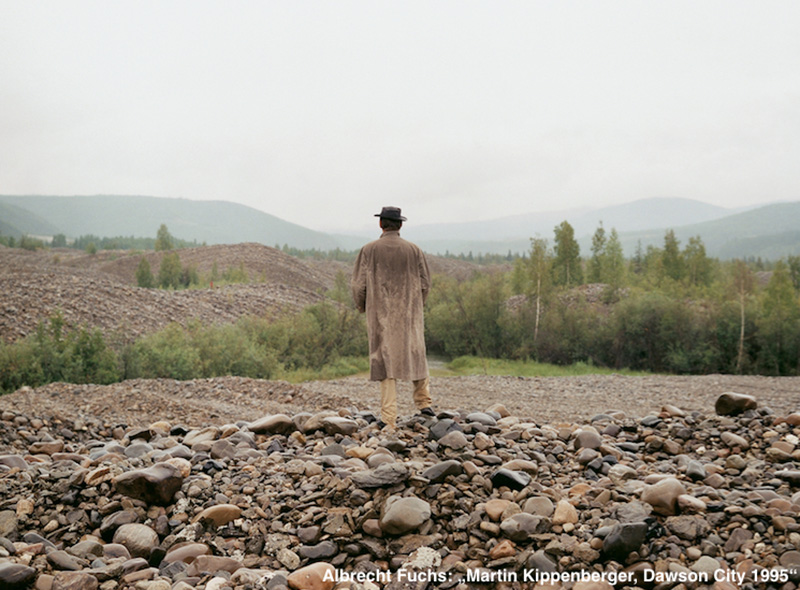ART-PRESENTATION: Martin Kippenberger-Gib mir das Sommerloch
 Martin Kippenberger was an extremely prolific artist, he worked in multiple mediums including painting, sculpture, installation, drawing, posters, photography and collage. Through the years, he developed a diverse style that did not shy away from caustic political commentary. His harsh criticism of the artistic status quo and daily life issues became evident through provocative imagery and recurring motifs that in many cases represented the artist himself and aimed at shocking and disturbing the viewer.
Martin Kippenberger was an extremely prolific artist, he worked in multiple mediums including painting, sculpture, installation, drawing, posters, photography and collage. Through the years, he developed a diverse style that did not shy away from caustic political commentary. His harsh criticism of the artistic status quo and daily life issues became evident through provocative imagery and recurring motifs that in many cases represented the artist himself and aimed at shocking and disturbing the viewer.
By Efi Michalarou
Photo: Galerie Nagel Draxler Archive
The exhibition “Gib mir das Sommerloch” is the second solo exhibition with works by Martin Kippenberger at Galerie Nagel Draxler in Berlin. The title of the exhibition is based on the exhibition title at Erhard Klein in Bonn (8/6-4/7/1986). The focus of the exhibition lies on the series “The Raft of Medusa” (1996) and on the early painting “Leiden warum-Leiden wozu” (1982) combined with a sculpture from the Peter-exhibition as well as with a great number of drawings, important multiples and smaller paintings. Various ephemera and original photos of the time of Martin Kippenberger contextualize the artist. Inspired by Theodore Géricault’s “Le Radeau de la Méduse” (1819), Kippenberger’s series “The Raft of Medusa” includes 16 paintings, 19 drawings, 14 lithographs, 9 photographs and a 8 by 15 foot woven rug which depicts a blueprint of the raft, the series was completed in 1996, one year before his untimely death at the age of 44. The series is demonstrative of his conflicted relationship with art historical precedents as well as his tendency to appropriate them. In his “The Raft of Medusa” series Kippenberger depicts himself as the individual figures from Géricault’s masterpiece. He posed for, then, worked from photographs, taken by his wife, Elfie Semotan. In the largest painting of the series, the artist recapitulates the whole of Géricault’s composition; now deconstructed in a tangled mess of body parts, faces, a diversity of unrelated strokes. The central painting of the series differs greatly from the original. Here, catastrophe is treated with a comic hand: complementary blocks of bright red and pale blue flatten and separate space in the same way that a cartoon suggests space and depth, with a single layer of solid color and line. The reference to cartoons is enforced with a text bubble in the top left corner of the work that reads, “Je Suis MeduseMéduse”. While Gericault’s composition draws the eye towards an invisible ship on the horizon at the very moment the shipwrecked realize their fate is about to change, Kippenberger depicts the rescue ship as a cartoon with a black, haphazardly painted line. Kippenberger’s version of this denouement is shown via a dark spot in the horizonless painting. Kippenberger was fond of skewed aphorisms. The title of his last poem, written shortly before his death, perhaps best encapsulates his life and his work “Never give up before it’s too late”.
* Photo: Martin Kippenberger, Dawson City 1995, Photo: Albrecht Fuchs, Galerie Nagel Draxler Archive
Info: Galerie Nagel Draxler, Weydingerstr. 2/4, Berlin, Duration: 29/6-2/9/17, Days & Hours: Tue-Fri 11:00-19:00, Sat 11:00-18:00, http://nagel-draxler.de
